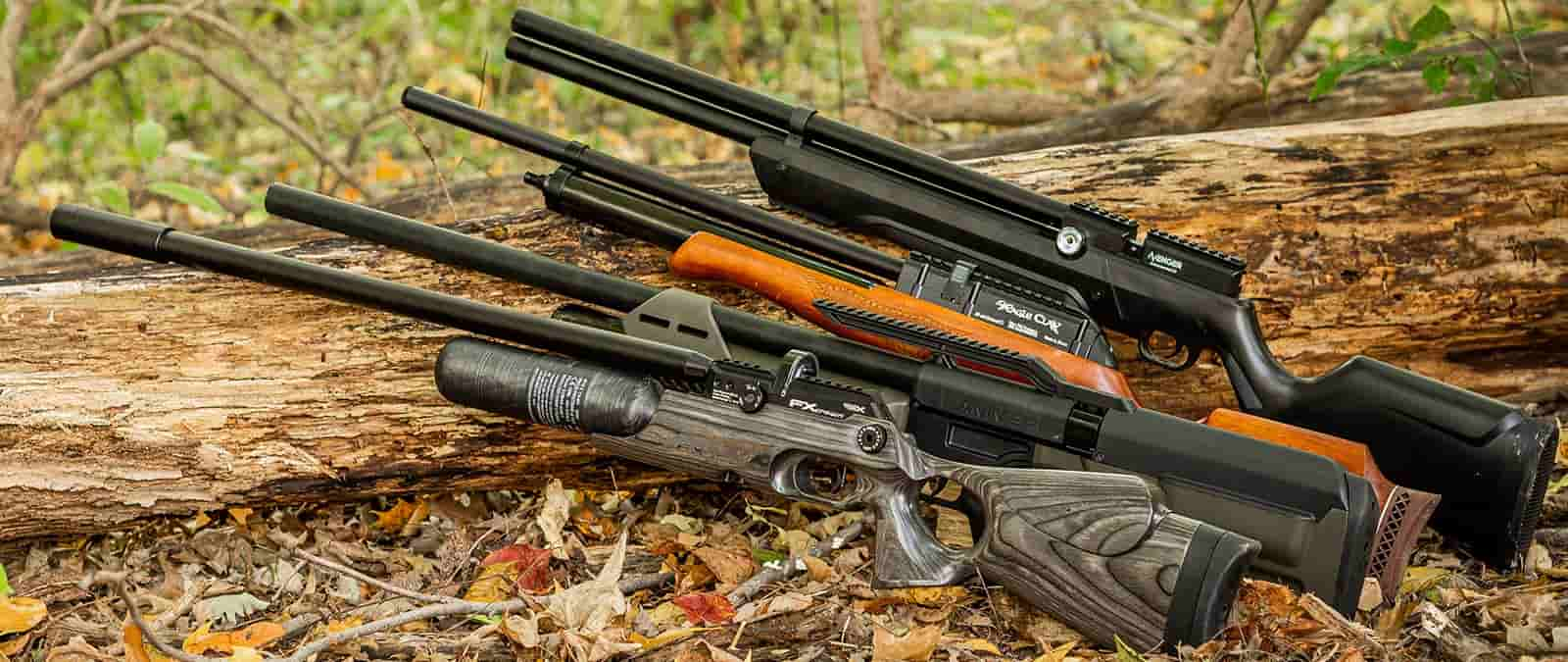Whether you're looking for an air gun for recreational use, target shooting, or hunting, you need to be sure that you make the right decision based on your needs. After all, air guns are designed to launch projectiles and should be handled with care and respect.
In order to make the best purchase, it's important to do your research and understand what type of air gun would best suit your intended use. There are a large variety of air guns available and understanding their differences will help you make an informed decision.
When choosing an air gun, some factors to consider include the:
- Powerplant
- Caliber
- Use
- Price
- Loudness
As you get more and more comfortable with shooting, you may also want to consider the weight, length, available features, and adjustability.
Be sure to set and stay within your budget. Air guns can range widely from fairly inexpensive to highly expensive, but they are in completely different classes. Setting your budget ahead of time will narrow down your choices and make sure you're not overspending.
Expert Tips for Beginners
- Start Small - beginners should start with accurate, low-powered air guns so they can learn shooting mechanics and enjoy building their skills. Starting with a high-powered air gun usually causes dissatisfaction and ends their air gun shooting journey.
- Buy Good Pellets - good quality pellets will be more accurate than lesser quality pellets because the manufacturing process is more stringent. However, if budget is a concern, buy the pellets you can afford.
- Build Your Skills - don't be afraid to learn advanced skills, like the artillery hold. It might be hard in the beginning, but the more you use it, the more you improve your skills.
- Practice Consistently - your shooting will improve with practice. The trick is to practice consistently. Sporadic practice produces sporadic results.
Powerplants
Air guns are a great economical way to enjoy shooting. When you're shopping for an air gun, one of the most important decisions you have to make is which type of powerplant will work best for you. Here is an overview of the most common powerplants:
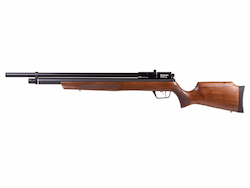
PCP (Pre-Charged Pneumatic)
Contains an onboard air cylinder that is pre-charged with air using a hand pump or air compressor and is always ready for use.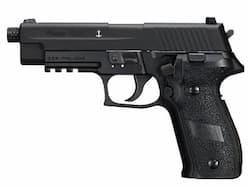
CO2
Carbon dioxide canisters fit into the handle or attach to a port. Pulling the trigger releases a portion of the CO2 to drive the projectile forward.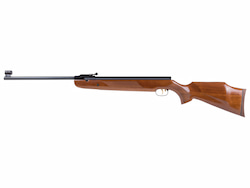
Spring Piston
A coiled spring compresses with the cocking mechanism, which pulls air into the cylinder. Pulling the trigger releases the spring, which pushes the air from the cylinder and through the barrel, which propels the projectile forward.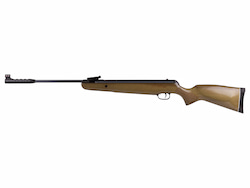
Gas Piston
Similar to the spring piston though gas is used to drive the piston rather than a coiled spring.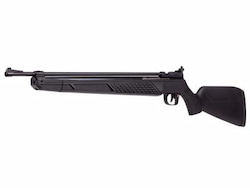
Pump
The air is pumped into the air cylinder just prior to firing. With a multi-pump, the amount of pumps increases the pressure inside the cylinder which increases the power of the shot. With a single stroke, the cylinder fills to capacity with a single pump (if a second pump is attempted the air escapes before refilling).Uses
Air gun shooting is fun and safe. It's a great activity for people of all ages. Whether you're looking for a casual way to spend time, or you want to participate in more competitive sports, shooting air guns can provide an enjoyable and rewarding experience.
Casual Target Shooting
Backyard recreation or casual target shooting is great for those who want to relax and have some fun shooting targets. From empty cans and paper plates to balloons and spinners, the possibilities for target shooting are endless.
There are plenty of air guns on the market today, each with its own unique characteristics and capabilities. You'll want a backyard-friendly air gun. They're often lightweight, easy to handle, and easy on the budget. Be sure to practice safe handling and always be aware of your surrounding to prevent accidents. Using a pellet trap will contain the ammunition and make for easy cleanup. Keep all pets out of the shooting area and have everyone wear eye protection.
Preferred Powerplants: CO2, Pump, Spring or Gas Piston
Preferred Calibers: .177 or .22
Preferred Ammunition: BB, Pellet
Hunting
Air guns are an excellent choice for hunting. From small game like squirrels and rabbits to large game like deer, bear, and wild boar. However, there are different air guns that are suited to different types of game.
Small game air guns are often lightweight, easy to handle, and easy on the budget. They're usually in .177 and .22 caliber, have relatively low power, and have quiet operation. Shop for small game hunting air guns.
Preferred Powerplants: Multi-Pump, Spring or Gas Piston, PCP
Preferred Calibers: .177 or .22
Preferred Ammunition: Pellet
Medium game air guns usually come in .25 and .30 caliber, should be a pre-charged pneumatic (PCP), have more power, and require a little more of an investment. Shop for medium game hunting air rifles.
Preferred Powerplant: PCP
Preferred Calibers: .25 or .30
Preferred Ammunition: Slug
Large game air rifles are PCPs, come in .357, .45, and .50 calibers, are very powerful, can be loud, require hearing protection, and require a significant investment. Shop for large game hunting air rifles.
Preferred Powerplant: PCP
Preferred Calibers: .357, .45, or .50
Preferred Ammunition: Slug
When hunting with an air gun, accuracy is key. It's important to practice regularly to hone your skills. Make sure you take the time to sight in your air gun before you go out hunting. Additionally, it's important to observe all safety precautions, wear eye protection, and avoid pointing your gun at anything you don't intend to shoot.
Competitive Target Shooting
Competition target shooting has been popular for decades and the increased availability of quality air guns makes it more popular all the time. If you're looking for a challenge and want to master your shooting skills, air gun shooting sports may be a perfect fit.
Preferred Powerplants: Pump, Spring/Gas Piston, PCP
Preferred Calibers: .177 or .22
Preferred Ammunition: BB, Pellet
Air gun Clubs - are local groups that join together over a common shooting interest and meet at designated ranges to practice and participate in competitions. Air gun clubs can provide a fun and social atmosphere, allowing you to make friends with like-minded people.
Field Target - is a competition that involves shooting at targets placed at various distances and angles. The goal is to hit as many of the targets as possible. Field target is a great way to test your skills and improve your accuracy.
10-Meter Rifle - consists of shooting a target 10 meters away with a .177 air rifle. It's an ideal competition for those looking for an intense challenge. These competitions are often sanctioned by the NRA or ISSF and can lead to the Olympic games.
10-Meter Pistol - consists of shooting a target 10 meters away with a .177 air pistol. It's an ideal competition for those looking for an intense challenge. These competitions are often sanctioned by the NRA or ISSF and can lead to the Olympic games.
Benchrest - requires shooters to rest their guns on a bench and fire from a stationary position. The goal is to be as accurate as possible when firing at targets from various distances. Benchrest is a great way to hone your skills and achieve higher scores in competitions.
Air gun sports can be great fun and provide a challenging way to test your skills and accuracy. Whether you are looking for casual recreation, hunting, or competition, there is an activity to suit your personality and skill level.
Budget/Features
When you're looking at buying an air gun, it's important to understand the differences between the different price levels and their features.
Low
Most low-budget air guns use spring piston technology, which is an excellent choice for anyone who wants a reliable and affordable option. Spring piston air guns usually feature a break barrel cocking system that's easy to use, as well as a good level of accuracy and power for shooting targets and small game. They often come with fixed sights, basic safety features, and trigger adjustments. They are a great entry point for air gunning with their simple operation, durability, and affordability.
Medium
As the prices go up, you can expect to find more features with better accuracy and more power. These features often include adjustable sights, two-stage adjustable triggers, and higher-quality stocks and accessory rails.
High
The higher quality, more expensive models will reward you with a range of features that can help improve accuracy and performance. The best quality air guns have the most adjustability and combine all the best features. They often have high-quality adjustable stocks, adjustable two-stage trigger, accessory rails, sound suppression moderators, and the power to shoot targets at longer ranges. They also have a smoother operation and a better feel to their performance.
Velocity Measurement: FPS vs FPE
Two important terms to understand in the air gunning world are FPS (feet per second) and FPE (foot-pounds of energy). These two measurements are closely related, but they measure different things.
FPS is a measurement of how fast the projectile moves through the air when it leaves the muzzle. By taking multiple readings at different distances, you can get an accurate measure of the velocity. Higher FPS typically translates into more power and better long-range accuracy, while lower FPS may mean less power but better short-range accuracy.
FPE is a measure of the power, telling you how much energy a projectile is carrying when it leaves the barrel. To calculate FPE, you need the mass of the projectile and the velocity at which it travels. For example, a 7.9 grains pellet traveling at 1000 feet per second has 1.38 foot-pounds of energy.
Knowing the FPE of an air gun can be useful when deciding which air gun to purchase, but it also means you need to know which ammo you are considering. Higher FPE means a more powerful gun, which will have greater penetration of a target and accurate shots at longer shooting distances.
If you're looking for an air gun for hunting, make sure it has enough FPE to take the game you want to hunt. The goal of hunting is to use one shot for one kill. So the power of the air gun must be high enough to penetrate the target animal with enough force to take its life.
If you want an air gun for target shooting, higher FPS will provide greater accuracy and range. With paper targets, FPE is not a necessary consideration since the paper is not alive.
Shopping Tip
To easily calculate energy and velocity, use our FPE Calculator, which you'll also find on product pages.
Calibers
Caliber is a measure of the projectile's size. The number is associated with the diameter in inches. 1 caliber is equal to 1 inch. So, a .177 caliber is .177 inches, and so on. Here is a list of the most common calibers.
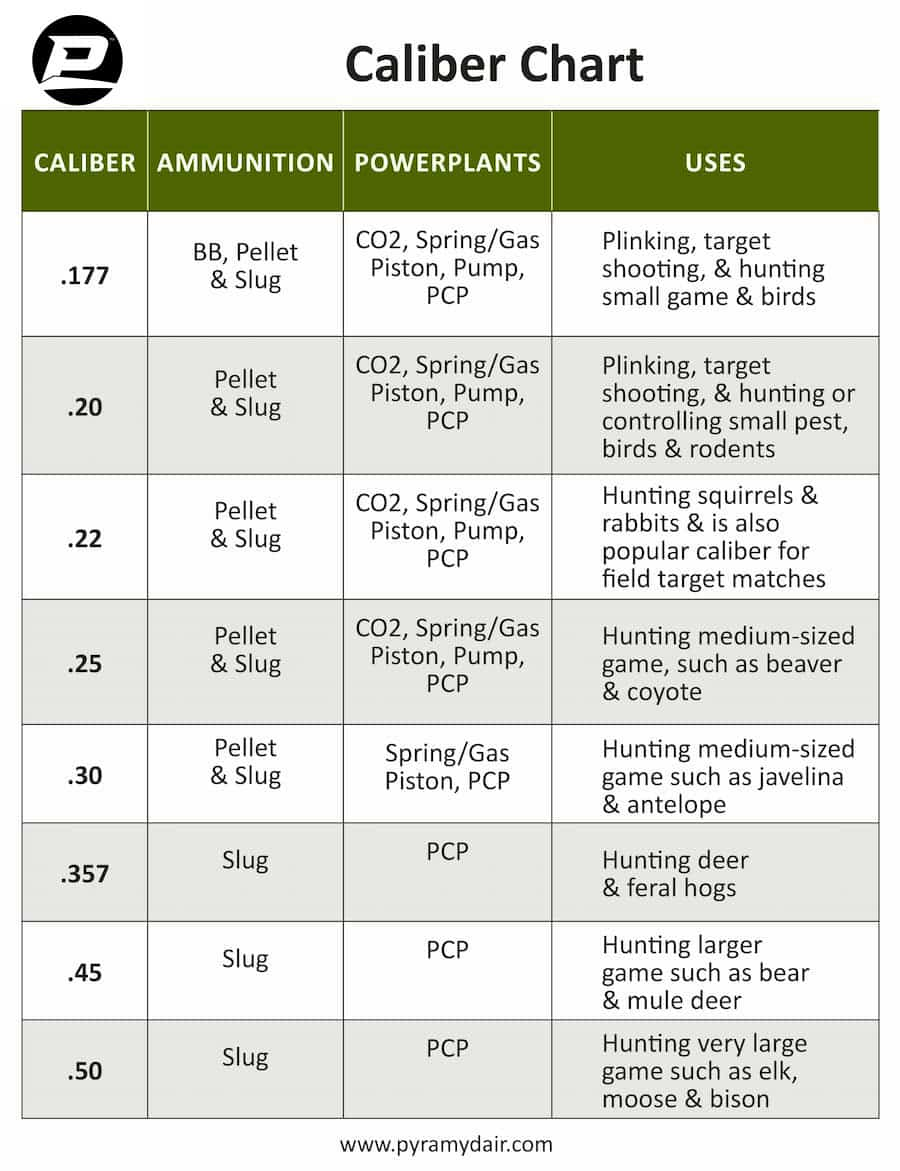
Ammunition
There are three main types of air gun ammunition; pellets, slugs, and BBs. They each have different characteristics and uses.
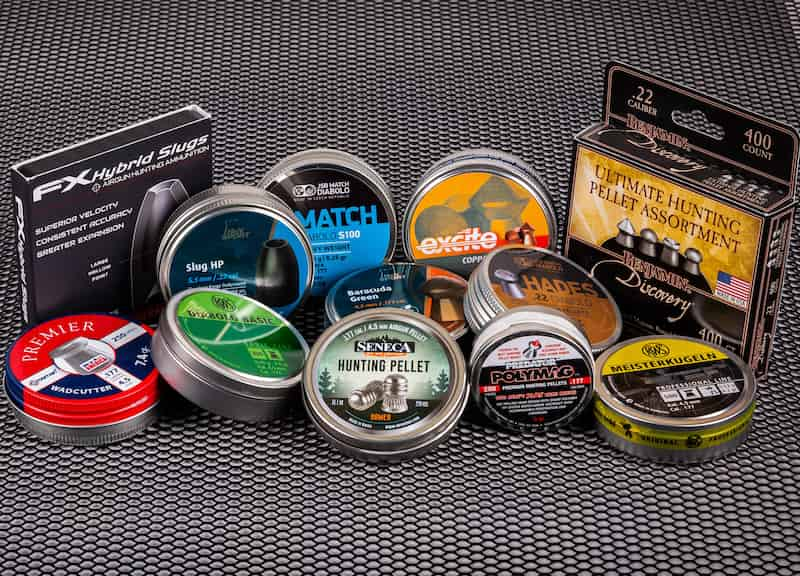
Pellets
Pellets are the most common type of air gun ammunition, and they come in a variety of sizes and shapes. They are usually made of lead, but lead-free alloys are also available. Pellets are designed to fit snuggly in the barrel of the air gun and the "skirt" adds stability in flight for better accuracy, but also adds drag to the pellet so it is better for short-range shooting.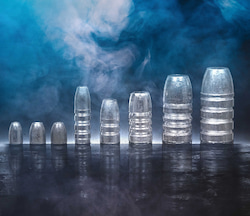
Slugs
Slugs are more bullet shaped and heavier than pellets. They have a better ballistic coefficient, which helps them travel faster and farther than pellets. They are well suited for hunting and can often be more accurate than pellets because they are less affected by the wind.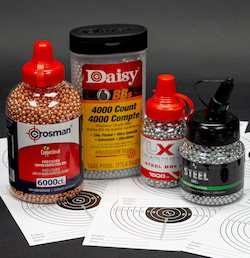
BBs
BBs are spherical projectiles often made of lead, steel, or another metal alloy. They are best used for recreational target shooting and plinking. They have a low penetration power making them great for novice shooters learning the basics of gun handling and safety.Other Factors to Consider
Loudness & Noise
Air gun noise is dependent on a few factors; barrel length, air pressure, and air volume. The more the air pressure and volume with a shorter barrel the louder the noise will be. The longer the barrel and the less air pressure and volume the quieter the noise will be. Higher-powered, larger caliber air rifles use a lot of air pressure and volume, so they are the loudest, even with the longer barrels. Adding baffles, shrouds, or a moderator to the barrels of powerful air rifles gives the chaotic air that leaves the barrel a structured place to go, which makes it quieten. According to OSHA standards, damage occurs to hearing starting at 130 dB.
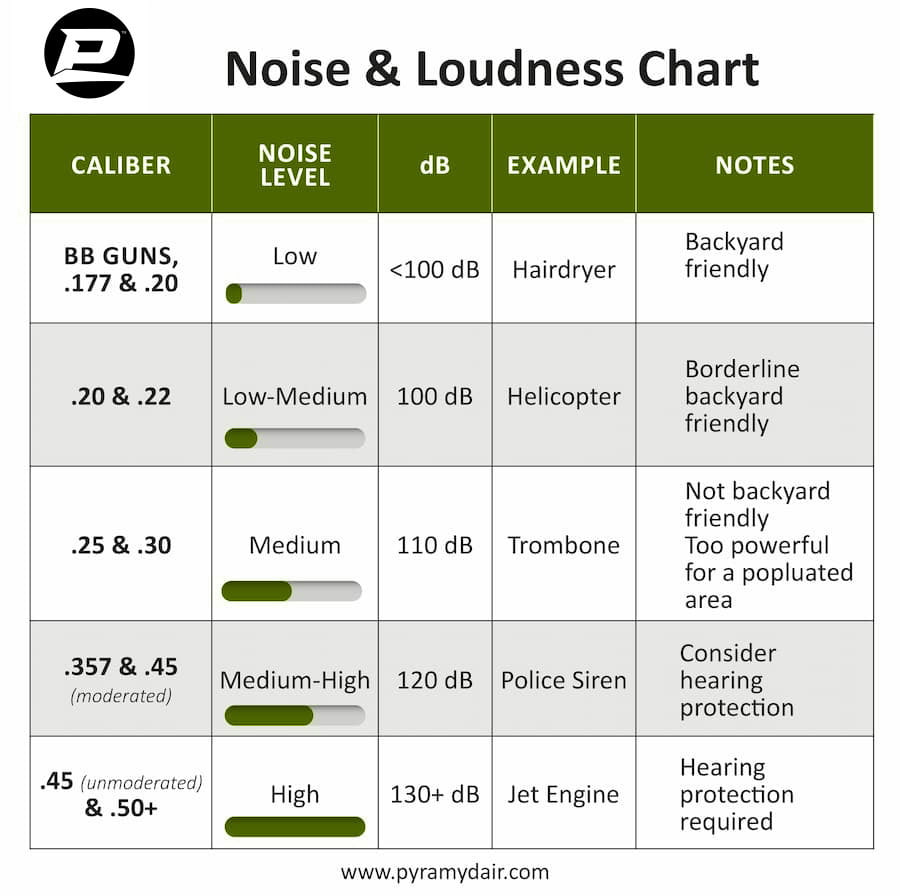
Shot Capacity
Air gun shooting is a great pastime that requires a good understanding of its essential components. Depending on your purpose, the right shot capacity can make a huge difference in how effective your gun is for the job. The two main types of shot capacity are single-shot and repeater. Knowing which type of shot capacity is best for your purposes will make sure you get the most out of your air gunning experience.
Single-shot
Single-shot air guns are the simplest type of air gun and have been around for many years. They are usually lightweight and easy to handle, making them ideal for beginners and those who want to keep their air gun investment small. It fires one shot at a time and must be reloaded and cocked manually before firing again. Because they are so easy to use, single-shot air guns are great for recreational target shooting and small game hunting.
When shopping for a single-shot air rifle, make sure to pay attention to the power of the gun, which will determine how far you can shoot accurately. You should also consider the caliber of the gun, as well as the type of action it uses. Finally, check the features of the gun to make sure it has the ones you prefer, such as adjustable sights, adjustable trigger, and stock design.
Repeater
A repeater air rifle is a great choice if you're looking for more firepower and capacity. The repeater shots multiple shots per load. It works by using an internal feed system that contains the ammunition and automatically reloads the gun with each shot cycle. The advantage of the repeater is the convenience it provides in taking follow-up shots. They are more complicated guns than single-shot guns and often require more investment.
When shopping for a repeater, keep in mind the magazine capacity, and whether you may need multiple magazines for the type of shooting you plan to do. It is more convenient to have several magazines preloaded and ready to go than taking the time to reload 1 magazine every time it's empty.
Semi-Auto
Semi-automatic air guns use the force of compressed air to fire a shot each time the trigger is pulled, meaning the user doesn't need to cock the gun between shots. This helps shooters achieve more consistent and accurate shots due to the lack of manual movement required for each shot.
Semi-auto air guns come in both pellet and BB versions. Pellet models are usually a bit more expensive and offer greater accuracy and longer distances than BB models.
Full Auto
Full auto air guns allow you to shoot multiple shots by holding down the trigger, rather than needing to pull the trigger for each shot. This makes them very fun for target shooting and plinking. Full auto air guns use a belt-fed magazine system to rapidly fire ammunition while the trigger is engaged. They usually have high shot counts, sometimes up to 1000 rounds.
Full auto air guns are an excellent choice for those looking for maximum firepower. They can provide hours of entertainment for target shooters.
Pellet Mag vs BB Mag
Pellet magazines and BB magazines are designed to offer multi-shot convenience to air gunners. They feed the ammunition to the barrel at the proper time for follow-up shots in repeating air guns. The main difference between pellet mags and BB mags is their shot capacity. Pellet magazines usually hold up to 10 rounds, while BB magazines can hold up to several hundred, depending on the gun.
Additional Shopping Resources
These shopping resources will help you understand and pick the right air gun:
